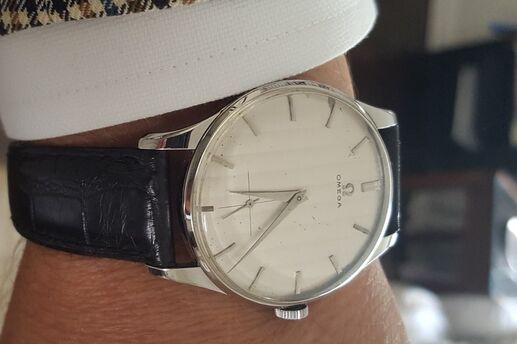Running Shoes 101
It hurts and defies logic, really, to shell out $100 or more for new shoes when your current pair still looks good. You can probably get away with holding onto dress shoes a little longer but clinging to an old pair of athletic shoes too long can cost you plenty.
The American Academy of Podiatric Sports Medicine reports that if runners don’t replace their shoes every 350 to 500 miles, they face a potential litany of injuries, including stress fractures, plantar fasciitis, shin splints and heel spurs. Exactly how long shoes will continue to provide the needed level of protection depends on individual size and weight.
Average runners pound their shoes on the ground around 700 times per mile so it doesn’t require an active imagination to see how shoes lose their shock absorption rather quickly. And once that occurs, it can change your stride and alignment, meaning pain and possible injury are just down the road.
So whether you’re a marathoner or you just like to take a spirited walk or light jog around the neighborhood, here’s what to keep in mind when you shop for new shoes:
Anatomy of a Running Shoe
The heart of running shoes is EVA, a polyurethane material that makes up the midsole, says Daniel Hortoin at Cincinnati’s Bob Ronker’s Running Spot, named the nation’s top specialty running store in 2008 by the Independent Running Retailer Association. The part of the shoe between the hard outer sole and the insole, the midsole delivers the protective spring and cushioning that keeps you running smoothly. It’s also the first part of the shoe to wear out, as its ability to rebound diminishes with miles logged. Hortoin explains that it’s the technical midsole or EVA upgrades to shoes that separate a manufacturer’s introductory model found at many big box chain stores and the higher-end shoes sold by running specialty stores. "Each brand has its specific technology and strategic placement of cushioning (like heel and forefoot gel pads)," says Hortoin, adding that plusher insoles with additional cushioning are a distinguishing characteristic of upper echelon running shoes as well.
Securing the Fit
To find the right shoe for you, Hortoin urges runners to take their old shoes with them to the store. Specialty retailers with knowledgeable sales associates will want to analyze your old shoes for clues to how you run.
"There is an ideal wear pattern we like to see that’s central as possible part in the shoe’s forefront with wear on the outside of the heel which is part of natural outward/inward roll as you run," he says. "If we see certain wear patterns that aren’t ideal, we can suggest a specific type of shoe to help correct it."
One common condition Hortoin and his colleagues at Bob Ronker’s see is excessive rolling or over-pronation, a potentially serious problem that frequently plagues runners (or walkers even) with flat feet. Pronation is the natural inward rolling of the foot as it strikes the ground, but when it’s too pronounced, it can lead to painful plantar fasciitis or long-term joint issues in knees or ankles. "If we see over-pronation patterns, we can suggest a shoe that adds stability and more rigid materials to the medial or inside to help control the motion."
Hortoin adds that when they measure feet for length and width, they look at arches because that can also dictate style and fit. "Some brands and models offer more arch support than others, and we also offer aftermarket inserts that provide additional support," he says of Bob Ronker’s, which has been selling running shoes since 1981.
Once you find a pair you like, the AAPSM suggests spending at least 10 minutes walking about the store in your new shoes and even running a block or two outside -- most good stores don’t mind. And once you make your purchase, resist the temptation to run a marathon in them, to avoid blisters and other race-day disasters. Break them in with a few short runs first to make sure they’re going to work for you.
Thickness of sports socks also can affect fit, so bring the socks you normally run in with you shopping. Synthetic fibers that wick moisture are recommended to avoid blisters.
Price Can Matter
Hortoin says that Bob Ronker’s generally stocks running shoes in the $80 to $150 range, and a pair that will work well for most runners can be found somewhere in the middle. "Price levels generally are a good indicator of quality in running shoes, and most runners should be able to get a good shoe at the $100 level."



